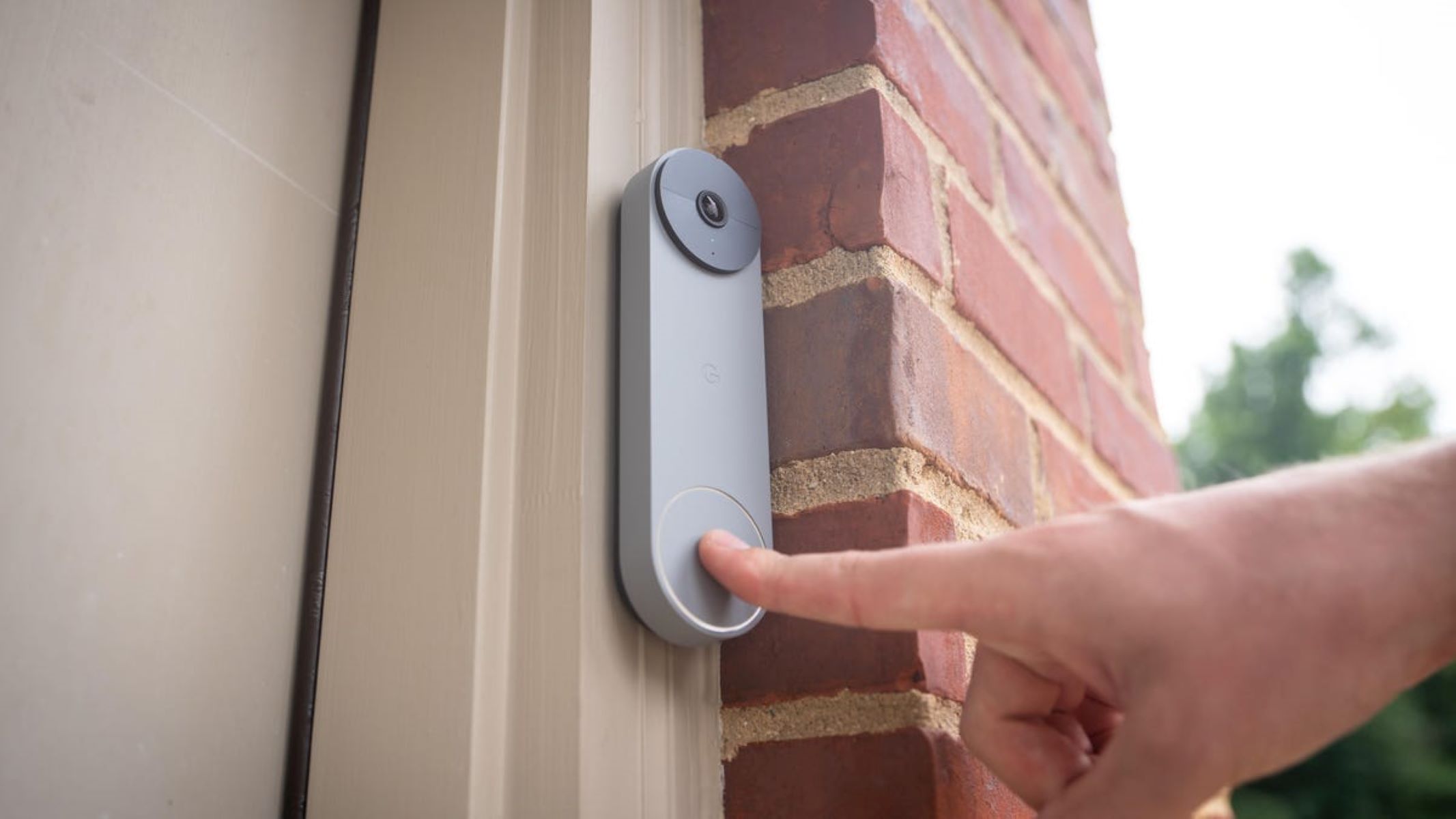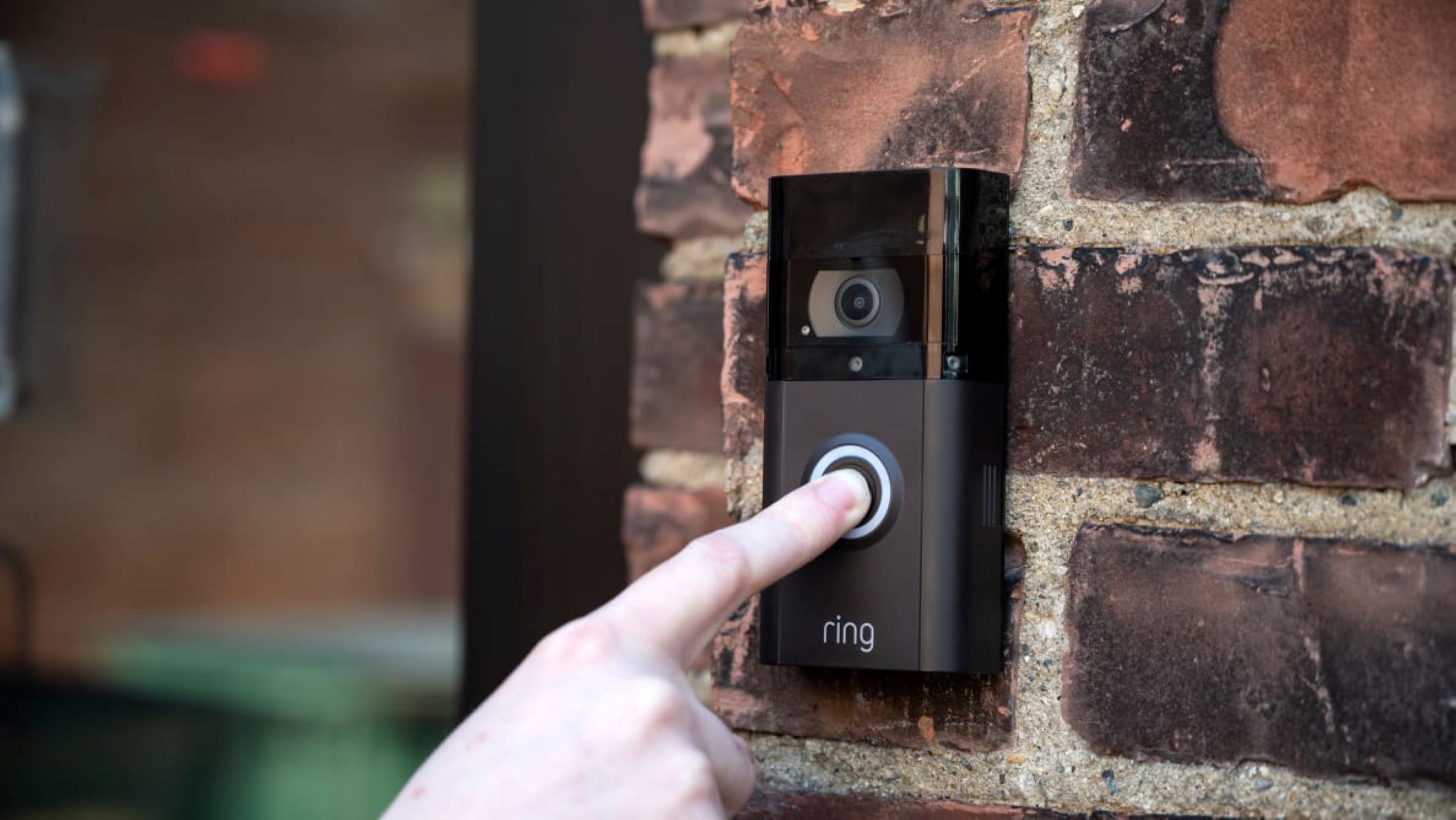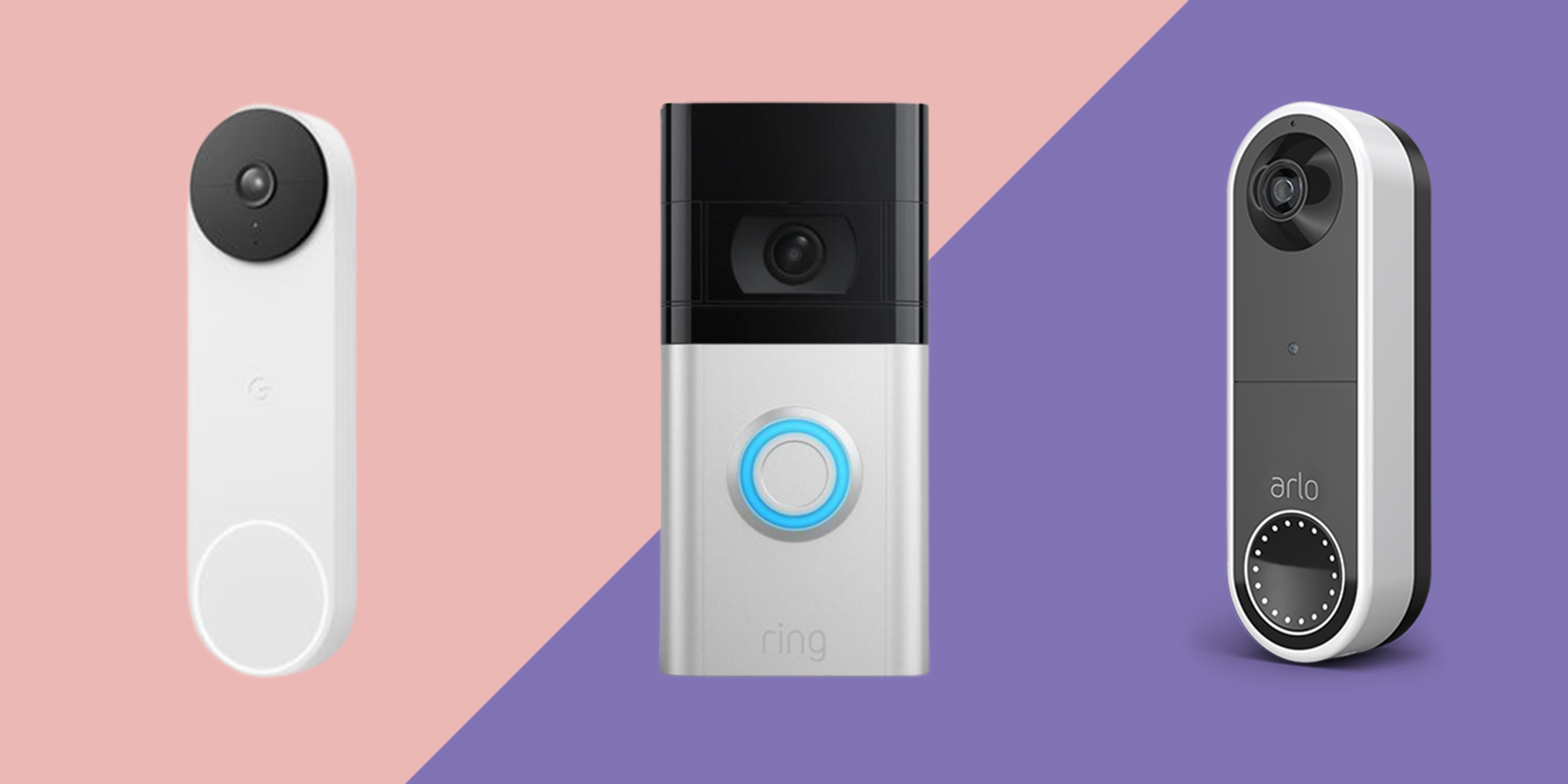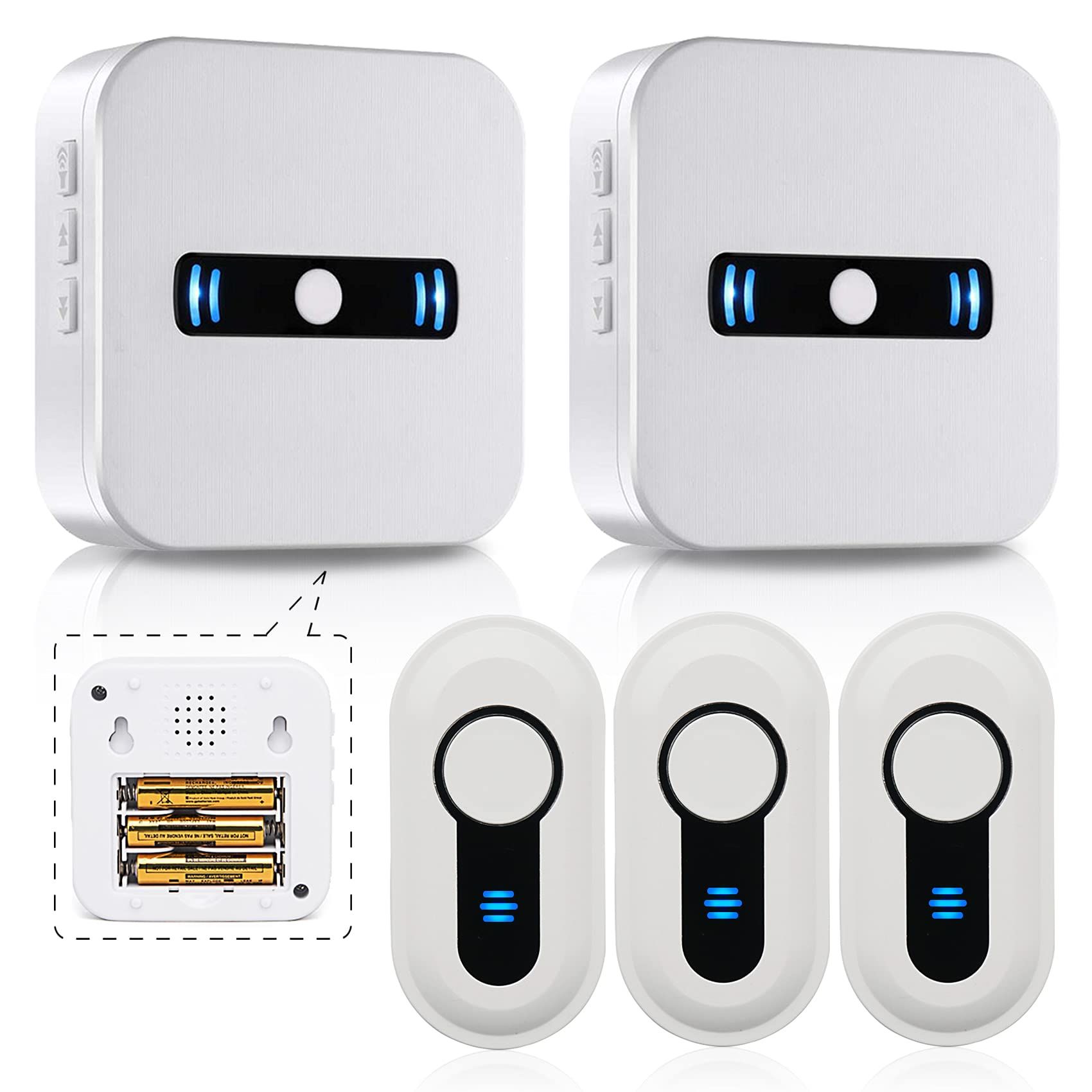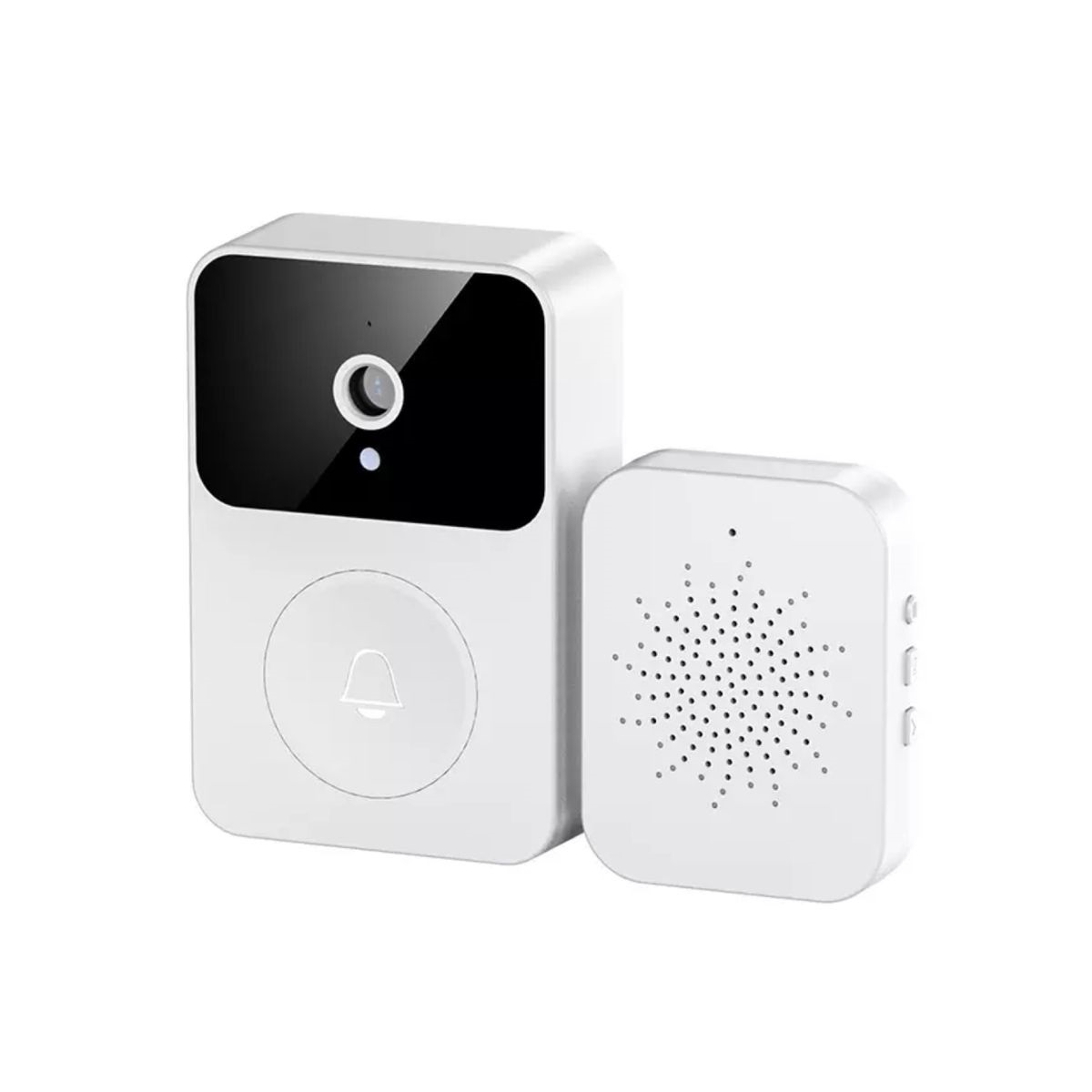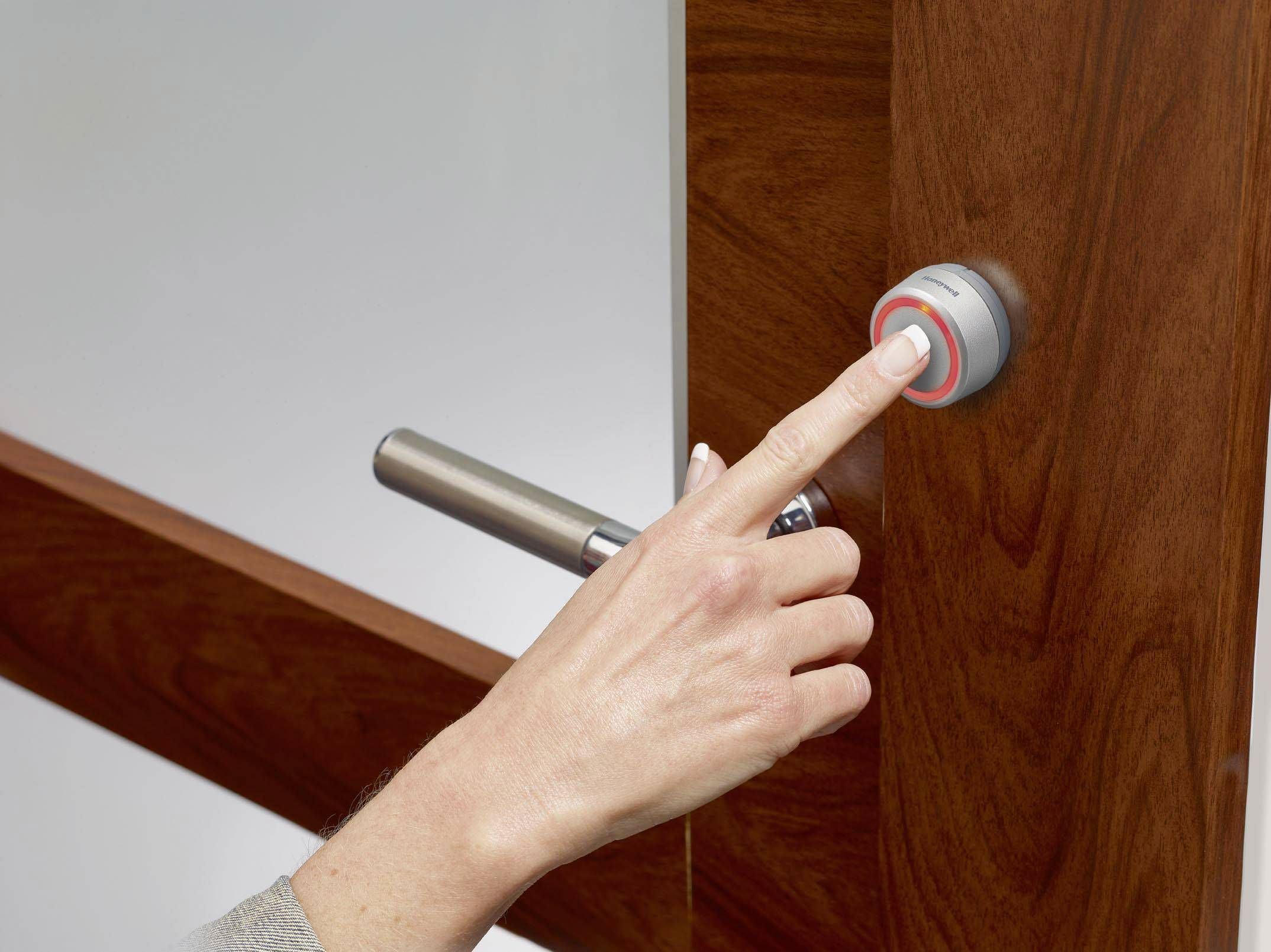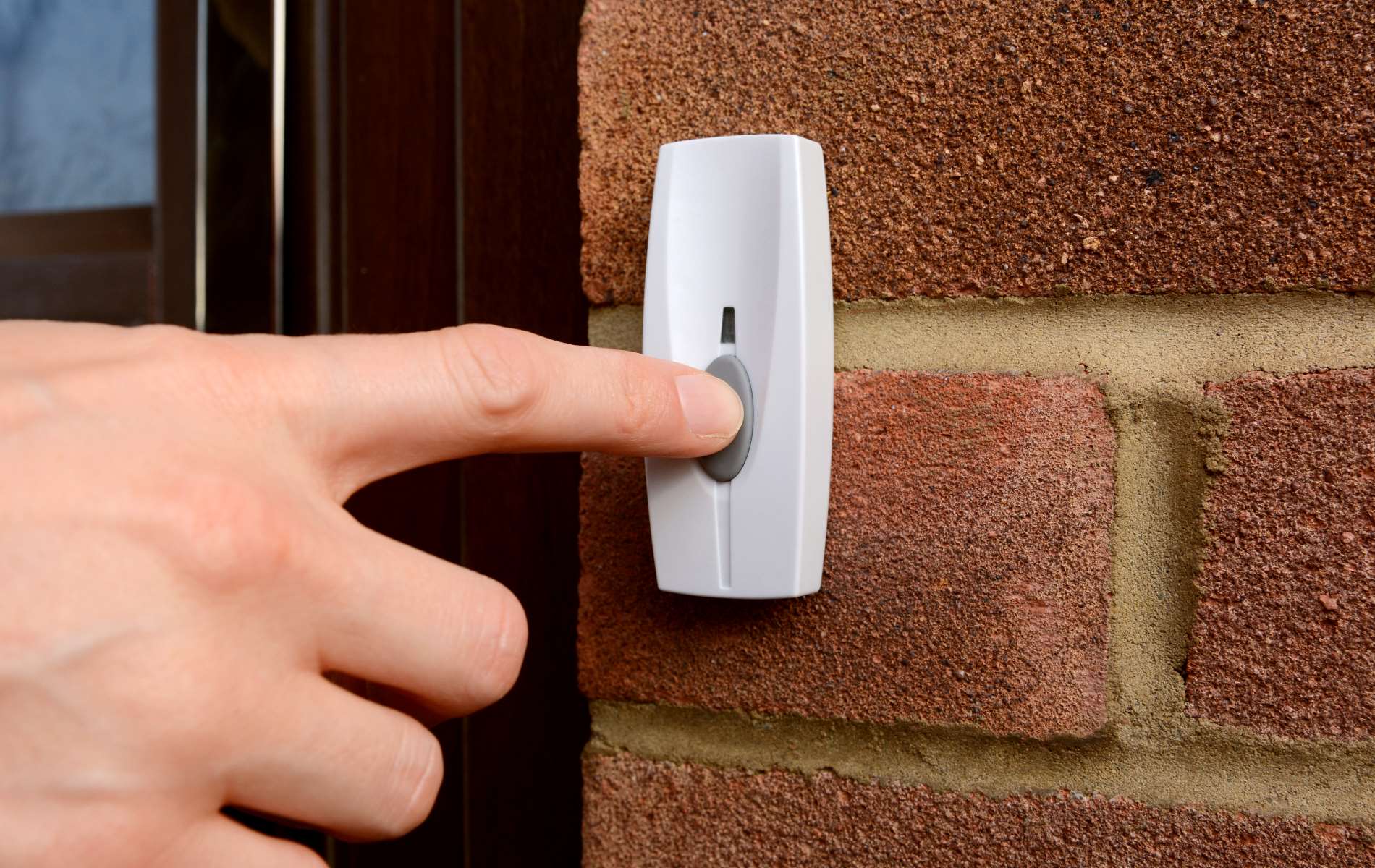Introduction
A wireless doorbell is a modern and convenient alternative to traditional wired doorbells. As the name suggests, it operates without the need for any physical wiring, making installation and setup a breeze. With a wireless doorbell, you can enjoy the convenience of a doorbell system without the hassle of drilling holes and running wires through your walls.
These innovative devices have gained popularity in recent years due to their ease of use, versatility, and increased functionality. With a wireless doorbell, you can hear the doorbell chime from any location inside your home or even outside in your yard. This makes them a great choice for large homes, apartments, or anyone who wants to enhance their home’s security and convenience.
One of the main advantages of a wireless doorbell is the flexibility it offers in terms of placement. You can install the doorbell button at your front door, gate, or any other entry point, and place the receiver unit anywhere in your home within the wireless range. This means you can have multiple receivers in different rooms or even carry a portable receiver with you as you move around your house or property.
In this article, we will delve into the intricacies of how a wireless doorbell works, explore its components, transmission and reception processes, discuss the wireless frequency and range, highlight common features, benefits, advantages, and provide troubleshooting tips. By the end, you’ll have a clear understanding of the inner workings of a wireless doorbell and how it can revolutionize the way you interact with visitors at your doorstep.
How Does a Wireless Doorbell Work?
Understanding how a wireless doorbell works requires insight into its components and the transmission and reception processes. At its core, a wireless doorbell system consists of two primary components: the doorbell button (transmitter) and the receiver unit.
The doorbell button, typically mounted near your front door or entryway, serves as the primary interface for visitors to alert you of their presence. When someone presses the button, it sends a wireless signal to the receiver unit, which is located inside your home. The transmission of this signal is the key to the functionality of the wireless doorbell.
The doorbell button is equipped with a small battery-powered radio transmitter. When the button is pressed, it activates the transmitter and sends a radio signal containing a unique code. This code acts as the identifier for that specific button, ensuring that the correct chime sound is played on the receiver unit.
The wireless signal is transmitted using a specific frequency within the radio frequency (RF) range. The most commonly used frequencies for wireless doorbells are 315 MHz and 433 MHz, which provide a good balance between range and interference resistance. Some advanced models may operate on different frequencies or use encrypted signals to enhance security.
Once the wireless signal is transmitted, it travels through the air, penetrating walls and other obstacles, until it reaches the receiver unit. The receiver unit picks up the signal using a built-in antenna and decodes the unique code transmitted by the doorbell button.
Upon successful decoding, the receiver unit triggers the desired chime sound or melody that you have selected. This signal can be transmitted to multiple receivers if you have additional units set up in different areas of your home.
Some modern wireless doorbell systems also come with additional features such as adjustable volume control, different chime options, visual indicators like LED lights, and even options for integrating with smart home devices or smartphone apps for notifications.
Overall, the wireless doorbell system provides a seamless and efficient way of alerting you to the presence of visitors at your door. Whether you’re busy in another part of the house or enjoying a relaxing moment in your backyard, you can trust that a wireless doorbell will provide a reliable means of communication and enhance your home’s convenience and security.
The Components of a Wireless Doorbell System
A wireless doorbell system consists of several key components that work together to create a seamless and reliable communication system. Understanding these components is essential for the proper installation, operation, and troubleshooting of your wireless doorbell system.
1. Doorbell Button (Transmitter): The doorbell button is the device placed near your front door or entryway. It typically consists of a button, a small battery-powered transmitter, and an antenna. When the button is pressed, it activates the transmitter, sending a wireless signal to the receiver unit inside your home.
2. Receiver Unit: The receiver unit is the device that receives the wireless signal from the doorbell button. It is usually located inside your home and can be plugged into a power outlet. The receiver unit contains an antenna to pick up the signal, a built-in speaker or chime sound generator, and often has additional features like adjustable volume control and different chime options.
3. Batteries: Both the doorbell button and the receiver unit require batteries for operation. The doorbell button typically uses a small battery, such as a coin cell battery, to power the transmitter. The receiver unit may use batteries, an AC adapter, or a combination of both, depending on the model. It’s essential to regularly check and replace the batteries to ensure uninterrupted operation.
4. Antennas: Both the doorbell button and the receiver unit have antennas to send and receive wireless signals. The antennas play a crucial role in transmitting and receiving signals efficiently. It’s important to position the antennas properly for optimal signal strength and range. Some wireless doorbell systems also come with external antennas that can be mounted for extended range.
5. Mounting Hardware: Mounting hardware, such as screws or adhesive strips, is included with your wireless doorbell system for easy installation. The doorbell button can be mounted on the exterior of your home using screws or adhesive, while the receiver unit can be placed on a tabletop or mounted on a wall using brackets or screws.
6. Optional Accessories: Some wireless doorbell systems offer additional accessories to enhance functionality and convenience. These may include extender units to increase the signal range, wireless door/window sensors for home security integration, or even video doorbell options that provide audio and video communication with your visitors.
Understanding these components will help you set up and troubleshoot your wireless doorbell system effectively. It’s important to refer to the manufacturer’s instructions for specific details and guidelines related to your wireless doorbell model. By having a clear understanding of the components, you can ensure a smooth and reliable operation of your wireless doorbell system.
Transmission Process of a Wireless Doorbell Signal
The transmission process of a wireless doorbell signal is the key mechanism that allows the doorbell button to communicate with the receiver unit. Understanding this process can help you troubleshoot any issues with signal transmission and ensure reliable communication between the two devices.
1. Button Press: When someone presses the doorbell button, a mechanical switch is activated. This switch completes the circuit and allows the flow of electric current from the battery to the transmitter.
2. Transmitter Activation: The flow of electric current activates the transmitter component of the doorbell button. The transmitter is powered by a small battery and is responsible for generating and sending the wireless signal.
3. Signal Generation: Once activated, the transmitter generates a wireless signal. This signal consists of a specific frequency and a unique code that identifies the doorbell button. The frequency determines how the signal travels through the air, while the code ensures that the correct chime sound is played on the receiver unit.
4. Signal Transmission: The generated signal is then transmitted from the doorbell button to the receiver unit. This transmission occurs through the air using radio frequency (RF) technology. The signal travels in all directions, including through walls and other obstacles, allowing the receiver unit to pick it up from different locations inside your home.
5. Antenna Reception: The receiver unit, equipped with an antenna, plays a crucial role in receiving the transmitted signal. The antenna captures the RF signal and sends it to the receiver unit’s internal circuitry for further processing.
6. Decoding and Activation: Once the signal is received by the receiver unit, it goes through a decoding process. The internal circuitry decodes the unique code transmitted by the doorbell button, ensuring that the correct chime sound is activated in response to the specific button press.
7. Sound Generation: After successful decoding, the receiver unit triggers the desired chime sound or melody that you have selected. This sound is then amplified through a built-in speaker or chime sound generator and projected into your home, alerting you to the presence of a visitor.
This transmission process occurs within a fraction of a second, allowing you to hear the doorbell chime almost instantly after someone presses the button. Understanding this process can help you troubleshoot any issues that may arise, such as weak signal strength or interference from other devices. It’s important to ensure that the doorbell button and receiver unit are within the specified transmission range and that no obstructions block the signal path.
The Receiver Process of a Wireless Doorbell Signal
The receiver process of a wireless doorbell signal is the mechanism that allows the receiver unit to interpret and respond to the signal sent by the doorbell button. Understanding this process can help you troubleshoot any issues with signal reception and ensure that you never miss a visitor at your door.
1. Signal Reception: The receiver unit, equipped with its own antenna, receives the wireless signal transmitted by the doorbell button. The antenna captures the radio signal and sends it to the receiver unit’s internal circuitry for further processing.
2. Signal Amplification: Once the signal is received, it goes through an amplification process to boost its strength. This ensures that even weak signals can be properly decoded and activated, allowing you to hear the doorbell chime loud and clear.
3. Signal Decoding: The internal circuitry of the receiver unit decodes the unique code transmitted by the doorbell button. This decoding process matches the code with the programmed chime sound or melody assigned to that particular button, ensuring that the correct sound is activated.
4. Chime Activation: After successful decoding, the receiver unit activates the desired chime sound or melody that corresponds to the specific button press. This activation can be done through a built-in speaker or chime sound generator, depending on the design of the receiver unit.
5. Additional Features: Some receiver units may have additional features such as volume control, multiple chime options, visual indicators like LED lights, and integration with other devices or home automation systems. These features enhance the functionality and convenience of the wireless doorbell system.
6. Range and Interference Considerations: The receiver unit’s ability to pick up the wireless signal depends on its range and the presence of any interference. It’s important to ensure that the receiver unit is placed within the specified range of the doorbell button for optimal signal reception. Additionally, factors such as thick walls, metal objects, or other electronic devices can interfere with the signal and reduce its effectiveness.
7. Power Source: The receiver unit typically requires a power source, either through batteries, an AC adapter, or a combination of both. It’s important to ensure that the receiver unit has a reliable power source to ensure uninterrupted operation.
The receiver process of a wireless doorbell signal is a crucial step in the communication between the doorbell button and the receiver unit. Understanding how the receiver unit interprets and responds to the signal ensures that you can rely on your wireless doorbell system to alert you to the presence of visitors at your doorstep.
Understanding Wireless Frequency and Range
Wireless doorbells operate on specific frequencies within the radio frequency (RF) range to transmit and receive signals between the doorbell button and the receiver unit. Understanding wireless frequency and range is essential for selecting the right wireless doorbell system and optimizing its performance.
1. Wireless Frequency: The frequency of a wireless doorbell refers to the number of times the signal oscillates per second. The most commonly used frequencies for wireless doorbells are 315 MHz and 433 MHz. These frequencies provide a good balance between range and resistance to interference from other devices.
2. Range: The range of a wireless doorbell indicates the maximum distance between the doorbell button and the receiver unit for reliable signal transmission. Range can vary depending on various factors such as the model of the wireless doorbell, the presence of barriers like walls or obstructions, and the environment in which the doorbell is installed. Typically, wireless doorbells offer a range of 100 to 300 feet (30 to 90 meters). It’s important to consider the size of your home or property when selecting a wireless doorbell with an appropriate range.
3. Signal Interference: Wireless doorbells can face interference from other electronic devices that operate on similar frequencies, such as Wi-Fi routers, cordless phones, or microwave ovens. This interference can disrupt the signal transmission and affect the range and reliability of your wireless doorbell. It’s important to consider the presence of other devices and select a wireless frequency that minimizes interference in your specific environment.
4. Signal Boosters and Range Extenders: If you have a large property or find that the range of your wireless doorbell is insufficient, you can consider using signal boosters or range extenders. These devices can amplify the wireless signal and extend the range of your wireless doorbell system. They are particularly useful if you have a large home or if you want to receive the doorbell signal in areas far away from the receiver unit.
5. Obstacles: The presence of physical barriers like walls, doors, or other structures can affect the range of your wireless doorbell. Thick walls, metal objects, or other electronic devices can block or weaken the signal, reducing the effective range. It’s important to consider the layout of your home and the potential obstacles when choosing the placement of the doorbell button and receiver unit to ensure optimal signal transmission.
Understanding wireless frequency and range allows you to select a wireless doorbell system that suits your needs and ensures reliable signal transmission. Consider factors such as the size of your property, the presence of potential signal interference, and the layout of your home when choosing a wireless doorbell with an appropriate frequency and range.
Common Features of Wireless Doorbells
Wireless doorbells come with a variety of features that enhance their functionality and convenience. While specific features may vary depending on the model and brand, there are several common features that you can expect to find in most wireless doorbell systems.
1. Multiple Chime Options: Many wireless doorbells offer a range of chime sounds and melodies to choose from. This allows you to personalize the sound that plays when someone presses the doorbell button. You can select a traditional chime sound, a familiar melody, or even seasonal tunes for special occasions.
2. Volume Control: Wireless doorbells typically include adjustable volume control. This feature allows you to increase or decrease the loudness of the doorbell chime based on your preference or the environment. You can set a higher volume for larger homes or quieter settings, and lower the volume for smaller spaces or when you prefer a more subtle notification.
3. LED Visual Indicators: Some wireless doorbells come with LED lights or visual indicators that accompany the audible notification. These lights can be useful in environments where hearing impairment is a concern or when you want a visual cue in addition to the sound. The LEDs may flash or light up in different patterns to indicate the doorbell button press.
4. Weather Resistance: Since wireless doorbell buttons are typically installed outdoors, it’s important that they are weather-resistant. Most doorbell buttons are designed to withstand exposure to rain, snow, and extreme temperatures. Look for models with an IP rating that indicates the degree of weather resistance and durability.
5. Expandability: Wireless doorbell systems often offer expandability options, allowing you to add additional doorbell buttons or receiver units. This can be useful if you have multiple entryways or want to have receiver units in different rooms of your home. Some systems also allow for integration with home security devices, such as door/window sensors or video doorbells.
6. Battery-Saving Features: To prolong battery life, many wireless doorbells have features that conserve power. These may include sleep mode, which temporarily disables the transmitter or receiver when not in use, or motion-activated alerts that only activate the doorbell when motion is detected.
7. Easy Installation: Wireless doorbells are designed for easy installation without the need for wiring or professional assistance. They typically come with mounting hardware, such as screws or adhesive strips, making it simple to attach the doorbell button to the exterior of your home or the receiver unit to a desired location.
These common features make wireless doorbells versatile and user-friendly. Whether you want to customize your doorbell sound, adjust the volume, or have visual indicators, there are options available to enhance your experience and meet your specific needs.
Benefits and Advantages of Using a Wireless Doorbell
Using a wireless doorbell offers several benefits and advantages compared to traditional wired doorbells. These advantages make wireless doorbells a popular choice for homeowners seeking convenience, versatility, and ease of installation.
1. Easy Installation: One of the main advantages of a wireless doorbell is its simple installation process. Since there is no need for any wiring or drilling through walls, you can set up a wireless doorbell system in a matter of minutes. This makes it a DIY-friendly option that saves both time and effort.
2. Flexibility in Placement: Wireless doorbells offer flexibility in terms of placement. You can install the doorbell button near any entry point, whether it’s your front door, back door, or gate. The receiver unit can be placed anywhere within the wireless range, allowing you to have multiple receivers in different rooms or even carry a portable receiver with you.
3. Portability: Wireless doorbells provide the convenience of portability. If you frequently move or have temporary living arrangements, you can easily take your wireless doorbell system with you. Simply detach the doorbell button and receiver unit, and reinstall them in your new location.
4. Expandability: Another advantage of wireless doorbells is their expandability. Many models allow you to add additional doorbell buttons or receiver units to your system. This is especially useful if you have multiple doors or want to have receiver units in different areas of your home.
5. Versatile Chime Options: Wireless doorbells often come with a variety of chime sounds and melodies to choose from. This allows you to personalize the sound that plays when someone presses the doorbell button. You can select a chime that matches your style or opt for different melodies for different entrances.
6. Enhanced Security: Wireless doorbells can contribute to home security. Some models allow for integration with door/window sensors or video doorbells, providing a comprehensive security system. You can receive notifications or check video feeds when someone approaches your door, enhancing your peace of mind.
7. Remote Accessibility: With some wireless doorbells, you can receive notifications or communicate with visitors remotely. This is particularly useful when you are away from home or unable to get to the door. Some models offer smartphone integration or compatibility with smart home devices for seamless remote access.
8. Weather Resistance: Wireless doorbell buttons are designed to withstand outdoor conditions. They are typically weather-resistant, able to withstand rain, snow, and fluctuations in temperature. This ensures that your doorbell remains functional and reliable regardless of the weather conditions.
Overall, wireless doorbells provide convenience, flexibility, and enhanced functionality compared to traditional wired doorbells. The ability to easily install, customize chime options, and expand the system according to your needs make wireless doorbells a popular choice for modern homes.
Troubleshooting Tips for Wireless Doorbells
While wireless doorbells are designed to be convenient and reliable, occasional issues may arise that require troubleshooting. Here are some common troubleshooting tips to help you solve problems with your wireless doorbell system:
1. Check the Batteries: If your wireless doorbell stops working or the sound becomes weak, the first thing to check is the batteries. Make sure the batteries in both the doorbell button and the receiver unit are properly inserted and have enough charge. Replace them if necessary, ensuring that you use the correct battery type specified by the manufacturer.
2. Verify the Signal Range: If the doorbell button is not transmitting the signal properly, check the signal range. Ensure that the doorbell button is within the specified range of the receiver unit. If there are obstacles like walls or large metal objects in the signal path, they may weaken the signal. Reposition the doorbell button or receiver unit if necessary to improve signal strength.
3. Check for Interference: Interference from other electronic devices can disrupt the wireless signal of your doorbell. If you experience erratic chimes or missed button presses, check for potential sources of interference such as Wi-Fi routers, cordless phones, or other wireless devices. Move these devices away from the doorbell system or switch them off to minimize interference.
4. Reset and Re-sync: If the doorbell button and receiver unit are not communicating correctly, try resetting and re-syncing them. Follow the manufacturer’s instructions to reset both devices to their default settings. Then, re-sync them by pairing the doorbell button with the receiver unit again. This process may vary depending on the model, so refer to the user manual for specific instructions.
5. Check Volume Settings: If you’re not hearing the doorbell chime, check the volume settings on the receiver unit. Ensure that the volume is not set too low or muted. Adjust the volume to your desired level and test the doorbell button to ensure the chime is audible.
6. Inspect for Damage: If your wireless doorbell system is not working despite checking the batteries and troubleshooting steps, inspect the doorbell button and receiver unit for any visible damage. Look for loose connections, bent pins, or signs of water damage. If you notice any physical damage, contact the manufacturer for assistance or consider replacing the affected components.
7. Contact Customer Support: If all troubleshooting attempts fail, and your wireless doorbell system is still not functioning correctly, it may be necessary to contact customer support. Reach out to the manufacturer’s customer service for additional assistance or further troubleshooting guidance specific to your wireless doorbell model.
By following these troubleshooting tips, you can often resolve common issues with your wireless doorbell system without the need for professional assistance. It’s important to consult the user manual and follow the specific recommendations provided by the manufacturer as each wireless doorbell model may have unique troubleshooting steps.
Conclusion
Wireless doorbells have revolutionized the way we interact with visitors at our doorsteps. With their easy installation, flexibility in placement, and advanced features, they offer a convenient and reliable means of communication. By understanding how wireless doorbells work, the components involved, the transmission and reception processes, and the considerations of wireless frequency and range, you can confidently choose a wireless doorbell system that fits your specific needs.
From the simple press of a button to the instant notification inside your home, wireless doorbells provide a seamless and efficient way to be alerted to the presence of visitors. With options for personalization, expandability, and integration with other devices, they offer enhanced security, convenience, and flexibility for homeowners.
However, as with any device, troubleshooting may be necessary from time to time. By following common troubleshooting tips, such as checking batteries, verifying signal range, and addressing potential interference, many issues can be resolved quickly and easily.
Whether you’re looking to upgrade from a traditional wired doorbell or considering a new installation, a wireless doorbell system offers numerous benefits. Its easy installation, versatility, and user-friendly features make it an attractive choice for modern homes. So, say goodbye to the limitations of wired doorbells and embrace the convenience of a wireless doorbell system that will enhance your home’s security, convenience, and communication.









